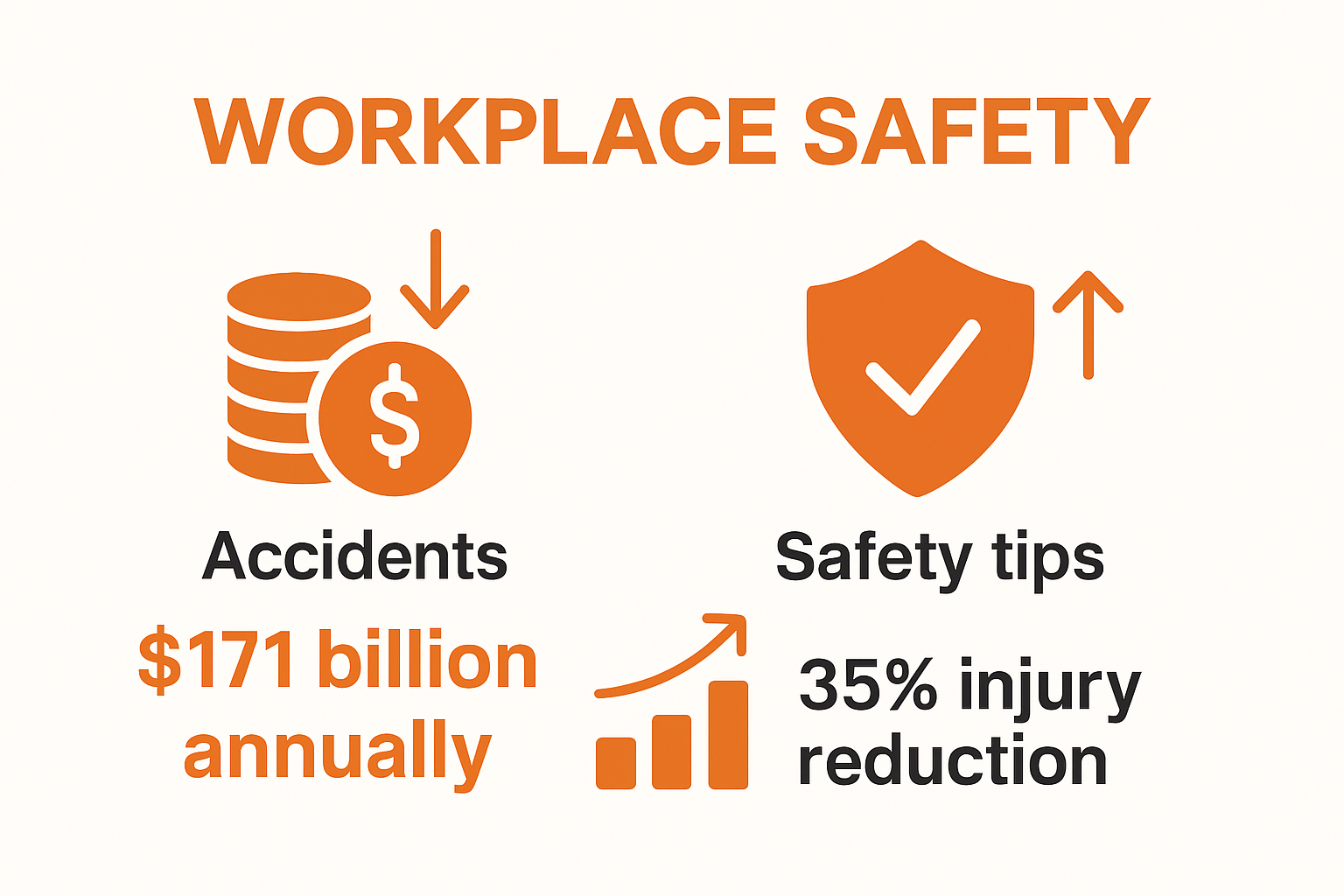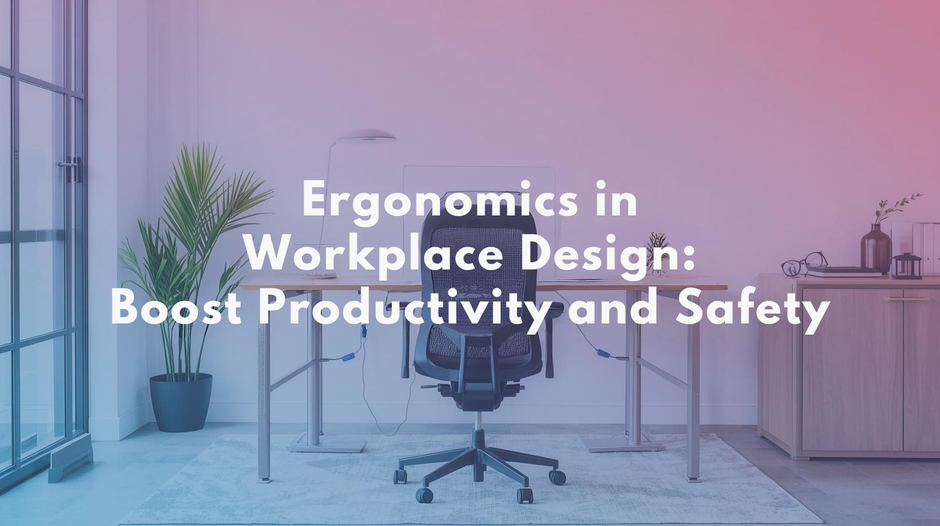Health and safety tips might sound like simple reminders for everyday routines. Yet, the impact is staggering. Effective health and safety practices can reduce workplace injuries by up to 35 percent according to the World Health Organization. Most people expect safety measures to be a box-ticking exercise for compliance. But they are actually the backbone of environments where people feel confident, protected, and set up for genuine success.

Table of Contents
- What Are Health And Safety Tips? An Overview
- Why Health And Safety Tips Matter In Various Sectors
- How Health And Safety Tips Promote Wellbeing And Compliance
- Key Concepts Of Effective Health And Safety Practices
- Real-World Applications Of Health And Safety Tips Across Industries
Quick Summary
| Takeaway | Explanation |
|---|---|
| Identify hazards proactively | Regularly assess environments for potential risks to prevent accidents. |
| Implement evidence-based strategies | Use structured guidelines to ensure effective health and safety practices. |
| Tailor safety tips to your sector | Develop specific strategies for unique industry challenges to enhance safety. |
| Foster a proactive safety culture | Encourage continuous learning and adaptation to integrate safety into daily workflows. |
| Prioritise psychological well-being | Address mental health alongside physical protection for a holistic safety approach. |
What are Health and Safety Tips? An Overview
Health and safety tips represent comprehensive guidelines designed to protect individuals from potential risks and hazards in various environments. These strategic recommendations aim to prevent accidents, minimise injuries, and promote overall wellness across personal, professional, and public spaces.
Understanding the Core Purpose
At their fundamental level, health and safety tips serve as preventative strategies that empower individuals to recognise, assess, and mitigate potential dangers. They are not merely reactive instructions but proactive measures that create safer living and working conditions. According to World Health Organization, effective health and safety practices can reduce workplace injuries by up to 35% and significantly improve overall community well-being.
Key components of comprehensive health and safety tips typically include:
- Identifying potential hazards in specific environments
- Understanding proper risk assessment techniques
- Implementing protective measures and preventative strategies
- Promoting awareness and education about safety protocols
Practical Applications and Significance
Health and safety tips transcend simple checklists. They represent a holistic approach to personal and collective protection that integrates knowledge, awareness, and actionable strategies. From workplace environments to personal living spaces, these guidelines help individuals develop a systematic approach to risk management.
Whether in industrial settings, educational institutions, healthcare facilities, or domestic environments, health and safety tips provide a structured framework for preventing accidents, managing potential risks, and creating secure spaces. By understanding and implementing these recommendations, people can significantly reduce the likelihood of injuries, health complications, and potential legal liabilities.
The ultimate goal of health and safety tips is not just compliance but cultivating a proactive culture of safety consciousness that becomes an inherent part of daily decision-making processes.
Why Health and Safety Tips Matter in Various Sectors
Health and safety tips are not generic recommendations but critical frameworks tailored to address specific challenges across diverse professional environments. Their implementation goes beyond mere regulatory compliance, representing strategic approaches that protect human capital, organisational reputation, and operational continuity.
Economic and Human Impact
The significance of health and safety tips extends far beyond preventing immediate physical harm. According to Georgia Institute of Technology, workplace accidents and injuries cost the United States approximately $171 billion annually. These economic losses underscore the profound financial implications of inadequate safety measures.

Key economic considerations include:
- Direct medical treatment expenses
- Productivity losses from worker absence
- Potential legal and compensation costs
- Potential reputational damage to organisations
- Insurance premium increases
Sector-Specific Safety Dynamics
Different industries present unique safety challenges that demand specialised approaches. Construction, healthcare, manufacturing, and technology sectors each require nuanced safety strategies addressing their specific environmental risks and operational complexities.
For instance, construction sites demand robust fall protection and equipment safety protocols, while healthcare environments necessitate infection control and ergonomic considerations. Manufacturing settings require comprehensive machine safety guidelines, and technology workspaces must address both physical and digital safety concerns.
The fundamental objective remains consistent: creating environments where human potential can be realised without unnecessary risk. Health and safety tips serve as intelligent design frameworks that anticipate potential challenges, integrate preventative mechanisms, and foster cultures of proactive risk management across professional landscapes.
By recognising that safety is not a static concept but a dynamic, evolving discipline, organisations can transform these tips from theoretical guidelines into practical, life-preserving strategies that protect both individual workers and collective organisational interests.
Below is a summary table outlining the different sector-specific health and safety considerations mentioned in the article. This table helps clarify how unique challenges in each industry require tailored safety strategies.
| Industry | Key Safety Focus | Description |
|---|---|---|
| Manufacturing | Machine safety, PPE | Prevents accidents with machinery, ensures correct gear |
| Construction | Fall protection, equipment handling | Addresses falls and safe use of heavy equipment |
| Healthcare | Infection control, workplace ergonomics | Reduces spread of disease and physical strain |
| Technology | Cybersecurity, digital workspace ergonomics | Protects data and ensures comfortable digital work |
| Hospitality | Customer interaction safety, stress management | Reduces accidents and manages workplace stress |
How Health and Safety Tips Promote Wellbeing and Compliance
Health and safety tips represent more than procedural guidelines they function as holistic mechanisms for protecting human potential and organisational sustainability. These strategies create comprehensive frameworks that simultaneously address individual wellness, legal requirements, and institutional risk management.
Psychological and Physiological Benefits
Effective health and safety tips go beyond physical protection by nurturing psychological security and emotional resilience. According to research from the International Journal of Environmental Research and Public Health, structured safety guidelines directly correlate with improved worker confidence, reduced stress levels, and enhanced overall workplace satisfaction.
Significant psychological advantages include:
- Reduced anxiety about potential workplace hazards
- Increased sense of organisational support
- Enhanced trust between employees and management
- Improved mental health through predictable safety protocols
- Greater emotional investment in workplace culture
Compliance and Regulatory Alignment
Health and safety tips serve as critical bridges between organisational practices and legal requirements. They transform abstract regulatory standards into actionable, practical strategies that organisations can implement systematically. By providing clear, structured guidance, these tips help businesses navigate complex legal landscapes while demonstrating their commitment to employee protection.
The integration of comprehensive health and safety tips enables organisations to:
- Proactively meet governmental safety regulations
- Minimise potential legal liabilities
Moreover, these guidelines create a culture of continuous improvement where safety becomes an embedded organisational value rather than a mere checkbox exercise. They encourage ongoing education, regular risk assessments, and adaptive strategies that evolve with changing workplace dynamics.
Ultimately, health and safety tips represent sophisticated tools for building resilient, responsible, and human-centric work environments. They acknowledge that true organisational success emerges not just from productivity metrics but from creating spaces where individuals feel genuinely protected, valued, and empowered to perform at their best.
This table presents a comparison of psychological and physiological benefits offered by robust health and safety practices in the workplace. It provides a clear overview of the multifaceted advantages, supporting a holistic approach to wellbeing discussed in the text.
| Benefit Type | Example | Impact on Workplace |
|---|---|---|
| Psychological | Reduced anxiety about hazards | Greater sense of security and support |
| Psychological | Enhanced trust between employees and management | Improved organisational culture |
| Psychological | Improved mental health through safety protocols | Higher worker satisfaction |
| Physiological | Minimized workplace injuries | Reduced medical costs and fewer absences |
| Physiological | Enhanced overall worker wellbeing | Increased productivity and reduced health issues |
Key Concepts of Effective Health and Safety Practices
Effective health and safety practices represent sophisticated, integrated systems that transcend traditional compliance frameworks. They constitute comprehensive approaches designed to systematically identify, assess, and mitigate potential risks while creating environments that prioritise human protection and organisational resilience.
Foundational Risk Management Principles
Risk management forms the cornerstone of robust health and safety practices. According to Occupational Safety and Health Administration, successful approaches integrate multiple strategic elements that work synergistically to create comprehensive protection mechanisms.
Critical foundational principles include:

- Proactive hazard identification and systematic assessment
- Continuous monitoring and adaptive risk management
- Transparent communication channels
- Regular training and skill development
- Evidence-based decision making
Holistic Approach to Workplace Safety
Effective health and safety practices demand a holistic perspective that recognises the interconnected nature of organisational environments. This approach goes beyond traditional reactive strategies, focusing instead on creating preventative ecosystems that anticipate and neutralise potential risks before they materialise.
Key components of this holistic methodology involve understanding that safety is not just about physical protection but encompasses psychological well-being, organisational culture, and systemic resilience. By integrating technological solutions, human-centric design, and continuous learning frameworks, organisations can develop sophisticated safety strategies that protect both individual workers and collective institutional interests.
The most advanced health and safety practices view risk management as a dynamic, evolving discipline. They acknowledge that effective protection requires constant adaptation, learning, and refinement. This means developing flexible frameworks that can quickly respond to emerging challenges, technological changes, and shifting workplace dynamics.
Ultimately, effective health and safety practices represent more than procedural guidelines. They are sophisticated strategic investments that demonstrate an organisation’s commitment to its most valuable asset: human potential.
Real-World Applications of Health and Safety Tips Across Industries
Health and safety tips represent dynamic strategies that adapt to the unique challenges of diverse professional environments. These nuanced approaches demonstrate how protection mechanisms can be tailored to specific industry requirements, transforming theoretical guidelines into practical, life-preserving interventions.
Industry-Specific Safety Strategies
Different sectors demand specialised health and safety frameworks that address their distinctive operational risks. According to Georgia Tech Professional Education, successful implementation requires understanding the unique environmental and procedural complexities of each industry.
Key industry-specific considerations include:
- Manufacturing: Machine safety protocols and personal protective equipment
- Construction: Fall protection and equipment handling procedures
- Healthcare: Infection control and ergonomic workplace design
- Technology: Cybersecurity and digital workspace ergonomics
- Hospitality: Customer interaction safety and workplace stress management
Transformative Safety Implementation
Successful health and safety applications go beyond mere compliance, creating transformative workplace cultures that prioritise human protection. The PRO-TEC Coating Company exemplifies this approach, achieving an impressive 5.4 million man-hours without a lost workday injury by developing a comprehensive safety strategy that integrates organisational culture, employee training, and proactive risk management.
Effective implementation involves more than standard protocols. It requires a holistic approach that considers psychological safety, technological integration, and continuous learning. By treating health and safety tips as adaptive frameworks rather than static checklists, organisations can create environments that not only prevent accidents but also enhance overall workplace performance and employee well-being.
The most sophisticated health and safety strategies recognise that protection is an ongoing process of assessment, adaptation, and improvement. They transform traditional risk management from a reactive discipline into a proactive, intelligent system that anticipates potential challenges and develops innovative solutions before risks can materialise.
Strengthen Safety from the Ground Up with Industry-Focused Matting
You have just explored how essential health and safety tips prevent accidents and promote wellbeing. Yet, even the best policies can fall short if your environment exposes people to hidden dangers like slips or falls. It is in these everyday touchpoints that real risk hides. Without proper floor solutions, hazards persist despite your best training and awareness programmes. This is where protective measures become a visible commitment to staff and visitor safety.

Take action now and bridge the gap between theory and practice. At Mats4U, you will find expertly designed anti-slip mats and entrance mats that instantly elevate your compliance with fundamental safety concepts. From workplaces needing heavy-duty floor coverings to public venues prioritising hygiene and branding, our made-to-measure mats help you create secure, compliant spaces. Visit our collection to make safety more than a guideline. Invest in practical, proven solutions and demonstrate your commitment to protection today.
Frequently Asked Questions
What are the key components of health and safety tips?
Health and safety tips typically include identifying potential hazards, understanding proper risk assessment techniques, implementing protective measures, and promoting awareness and education about safety protocols.
How do health and safety tips apply in different industries?
Health and safety tips vary by industry and address specific operational risks. For example, construction sites focus on fall protection, while healthcare environments prioritise infection control.
What are the economic benefits of implementing effective health and safety practices?
Implementing effective health and safety practices can significantly reduce workplace injuries, resulting in lower medical expenses, decreased productivity losses, and minimised legal liabilities, ultimately leading to financial savings for organisations.
How do health and safety tips contribute to workplace wellbeing?
Health and safety tips promote workplace wellbeing by fostering a culture of safety, reducing anxiety, enhancing worker confidence, and creating an environment where employees feel protected and valued.









